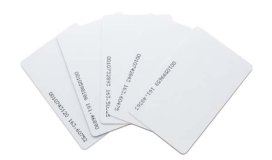According to a Juniper Research study released last month, IoT platform-based devices in the retail environment, including RFID and Bluetooth Low Energy (BLE) beacons, will number 12.5 billion in the next four years. The figure is rising 350 percent, the study finds, from the 2.7 billion connected devices last year. These devices include RFID tags on products, Bluetooth beacons installed in stores, and digital signage or electronic shelf labels. The details are available in the study, titled "IoT in Retail: Strategies for Customer Experience, Engagement & Optimisation 2017 – 2021."
Much of the growth Juniper researchers are forecasting is being enabled by the widespread use of RFID technology in retail for inventory management, which is expected to build more steam as tag pricing continues to drop.
With that kind of growth ahead, the research company report advises retailers on how to manage that growth within their own operations for three overall applications: understanding customer behavior (and thereby improving services and operations accordingly), enhancing the customer experience with features such as smart mirrors and automatic checkout, and improving the supply chain (and thereby enabling an omnichannel model, as well as reducing the risk of store out-of-stocks).
The company's study was based on a combination of primary and secondary research, says Steffen Sorrell, a Juniper analyst and the report's author. The primary research consisted of interviews with IoT stakeholders and service providers.
The IoT encompasses many technologies. "It's important to understand that the IoT, as a concept, does not directly concern a set of technologies," the white paper states. "What it does concern is a transformation in business processes, using a set of technologies to support this change."
However, RFID growth is key to the expected IoT adoption rate of retailers, the study finds. RFID was previously too expensive for widescale adoption due to the cost per tag, Sorrell explains, "hence its use was restricted to high-margin products where ROI [return on investment] was easier to achieve."
Since profit margins in retail are often thin, Sorrell says, the technology did not take off as expected. Now that tags are hovering around the $0.10 mark, he adds, it is much more viable to consider a strategy of 100 percent tagging, which allows for accurate oversight of the entire supply chain.
As that RFID-based data is being integrated into other systems, the study notes, retailers can transform the in-store experience by, for example, installing smart mirrors with RFID readers in clothing store changing booths to suggest similar or matching products.
However, the study finds, costs remain an obstacle or a challenge for many retailers, even for RFID. "This means that RFID and BLE will be restricted to players who are able to make investments that do not realize ROI until 12 to 18 months later," the report states.
Technology advances are also enabling passive RFID tags to be read at greater distances than earlier versions, the study finds, from an approximate 9-meter distance to tens of meters. That reduces the number of readers required. Increasingly, retailers are able to move beyond using handheld readers as well, for this same reason.
When it comes to beacon technology, the trend is still upward, as companies try to strike a balance between providing consumers with appropriate location-based content in push notifications, without intruding on their privacy. "As user interaction with beacons increases, either through Physical Web or Facebook beacons, the technology can become much more useful," Sorrell says. Facebook launched its own beacons in 2015, offering beacon hardware to businesses if they integrate those beacons with the Facebook mobile app. In this waym users would not need to download a store's app, but would simply use their existing Facebook app.



